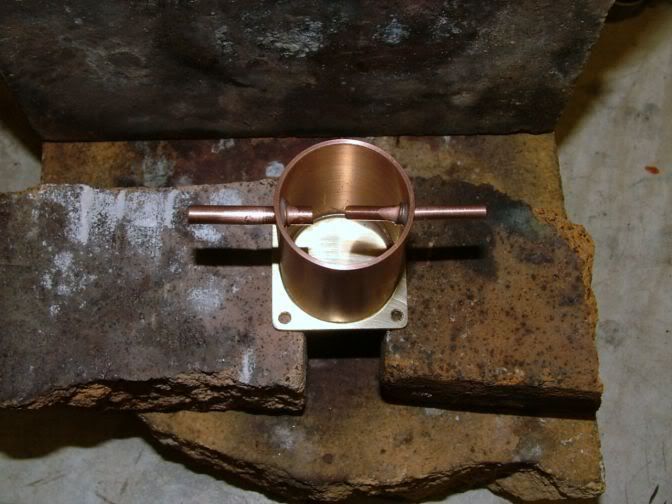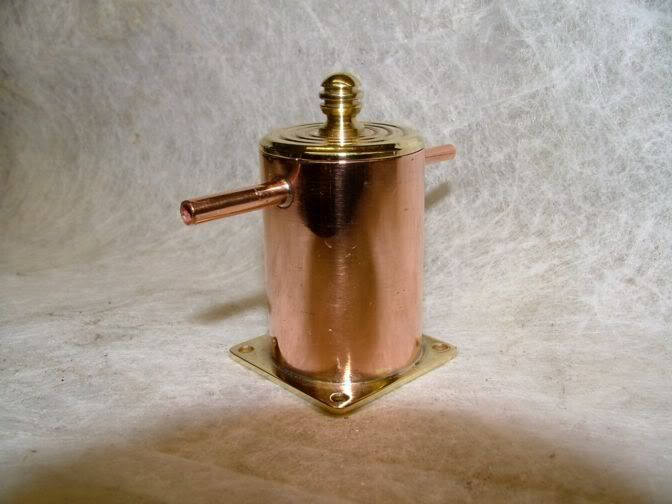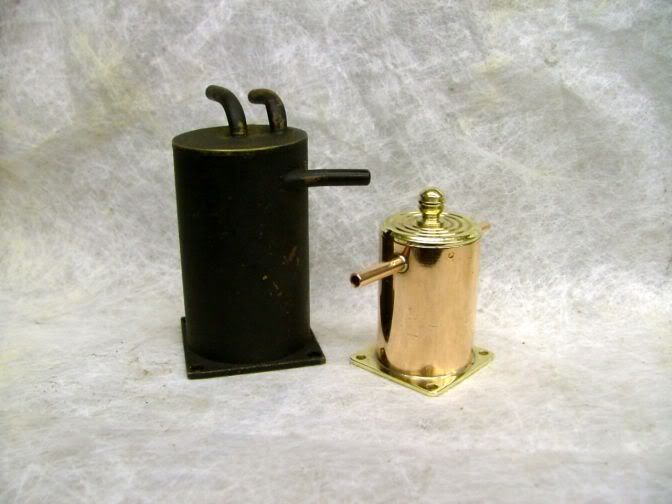Tony Bird
Senior Member
Hi,
Using an oil/water separator on a model steam engine's exhaust system much reduces the oily deposits on the model, and when used on a model boat also reduces water contamination.
In its simplest form an oil separator can consist of a cylinder with a stack on it. The exhaust is fed into a pipe which nearly reaches across the cylinder. The contaminated exhaust steam exits the pipe and hits the wall of the cylinder; the oil/water going downwards and the steam up. A drainage system on the cylinder can be fitted but I prefer to use a syringe to syphon the oil water mix out it is less messy.


If the boiler has a fairly high chimney which doesn't handle the exhaust gasses from a burner it too can be used as an oil/water separator. The bottom of the chimney is sealed and the exhaust from the steam engine is fed by a pipe into the chimney and exits the pipe to its side about half way up. A drain pipe is fitted at the base of the chimney from where the waste oil/water can be collected.




The boiler being used is for use on a model steam boat and can be fuelled by either by a ceramic gas burner or Sterno in a tray.

A video I hope which shows for a very short time the oil/water separator working.
www.youtube.com/watch?v=utqXWfS4DaY
Regards Tony.
Using an oil/water separator on a model steam engine's exhaust system much reduces the oily deposits on the model, and when used on a model boat also reduces water contamination.
In its simplest form an oil separator can consist of a cylinder with a stack on it. The exhaust is fed into a pipe which nearly reaches across the cylinder. The contaminated exhaust steam exits the pipe and hits the wall of the cylinder; the oil/water going downwards and the steam up. A drainage system on the cylinder can be fitted but I prefer to use a syringe to syphon the oil water mix out it is less messy.


If the boiler has a fairly high chimney which doesn't handle the exhaust gasses from a burner it too can be used as an oil/water separator. The bottom of the chimney is sealed and the exhaust from the steam engine is fed by a pipe into the chimney and exits the pipe to its side about half way up. A drain pipe is fitted at the base of the chimney from where the waste oil/water can be collected.




The boiler being used is for use on a model steam boat and can be fuelled by either by a ceramic gas burner or Sterno in a tray.

A video I hope which shows for a very short time the oil/water separator working.
www.youtube.com/watch?v=utqXWfS4DaY
Regards Tony.



































































